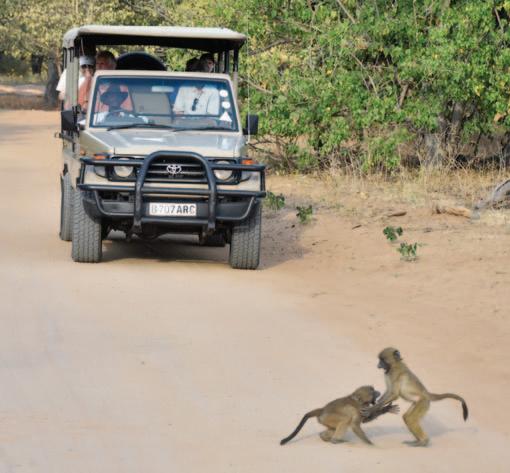
2 minute read
BONUS TRAVEL COLUMN Destination Africa: animal magnetism around every bend
Lakeside’s Senior Reporter
Pamela A. Keene recently returned from an African Safari. Here is her final installment of a two-part series describing the fascinating journey that offered up a surprise or two.
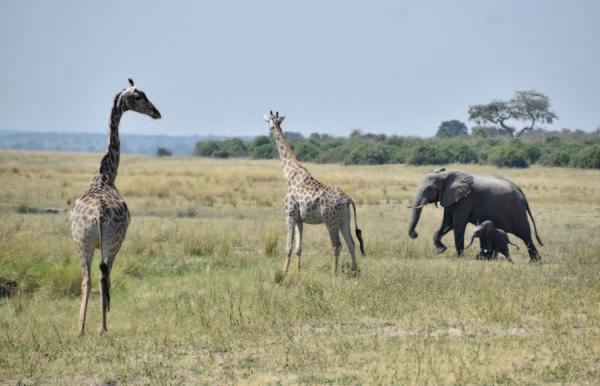
By Pamela A. Keene
As we left Zimbabwe on two small chartered planes, three more tented safari camps and more morning and evening game drives awaited. Already, we’d seen amazing wildlife, visited a village and a school and our appetites were whetted for even more discoveries.
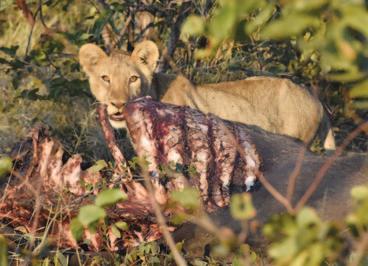
If our upcoming modes of transportation – small planes and dirt landing strips, flat-bottomed boats, dugout canoes, more safari jeeps, hiking and vans – foretold the diversity of our adventures, we still couldn’t have predicted what was to come.
Next stop was for three nights at Kaingu Safari Lodge in Zambia’s Kafue National Park, deep in the bush over more bumpy onelane sandy roads carved out between the tall grasses and occasional stands of trees. After several hours with stops along the way to view impala, elephants and zebra, we learned that the last part of our journey to camp would include two 8-passenger fishing boats.
As the sun went down over the water, we heard the joyous sounds of native music and drums as our hosts waited to greet us at the docks. After dinner, we settled in to prepare for our early-morning game drive.
Rising at between 5 and 5:30 a.m. became the norm for the rest of the trip, with a light breakfast in the lodge as the sun rose. Our little boats powered by 40 hp outboards took us back to the jeeps where we drove for several hours spotting zebras and impalas, giraffes, ostriches and glimpses of colorful birds.
Again, each day we’d return to the lodge for a midday brunch by the river, a bit of time to rest then 3 p.m. tea before setting out for our late afternoon game drive. Most days we had two game drives, but we also had a mid-day hike to a large rock outcropping that in many ways reminded me of the monadnock granite formations at Stone Mountain.
Each evening the intense sunsets over the water drew our attention westward where silhouettes of dead trees and lowgrowing brush provided perfect framing for the deep orange, red and purple skies.
Small planes once again took us back to Livingstone near the Zimbabwe border where we boarded a van to drive to Chobe National Park and our first Botswana 3-night stay at Jackalberry tented camp on the banks of the Chobe River.
It was by far the most elegant of our camps; our platform safari tents included air conditioning, electricity for charging our phones and camera batteries, and a large bathroom with a large footed white porcelain soaking tub.
At Jackalberry we took both safari jeep game drives and outings by boat. We skirted the shore of the Chobe River, where we saw water fowl, elephants, hippopotamus of all ages, cape buffalo and giraffe. Another route farther from the shore allowed us to experience large groups of elephants, impala grazing with zebras, and a gathering of lionesses and teenaged cubs on both sides of the road.
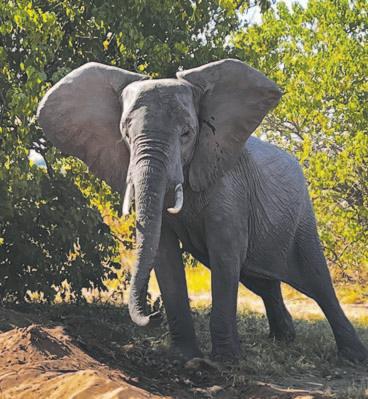
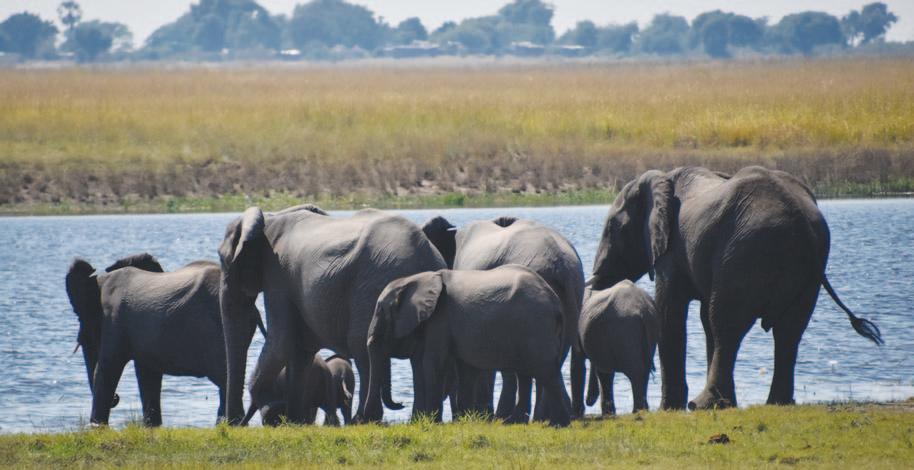
On two separate drives, we ended up at a large acacia tree with a giant inactive termite mound at its base. It had a cinderblock building nearby with men’s and women’s bathrooms with sitdown flushing toilets, the only one we ever saw in the brush other than in our camps.
The spot was vastly different in the early afternoon than it was mid-morning. Three vehicles were parked there to enjoy the facilities; the wildlife was much more active in the early afternoon as well with a parade of warthogs and an active colony of vervet
See Safari, pages 37 monkeys.
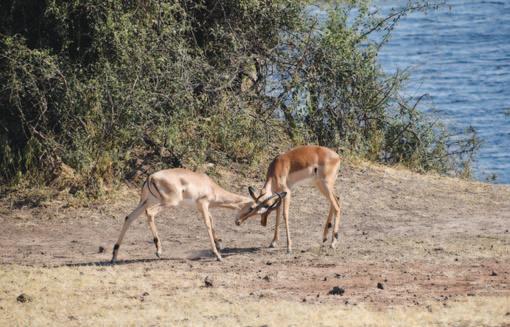
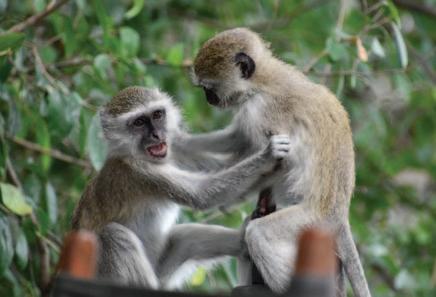
We soon discovered that the monkeys were very interested in the trucks and the people. Several monkeys climbed into the open windows of one camper to appropriate a loaf of bread. As we began to unpack our lunches of sandwiches, fruit and slices of pizza, the vervets gathered around – not to wait for us to toss them snacks. No; they aggressively darted toward us, grabbing a
